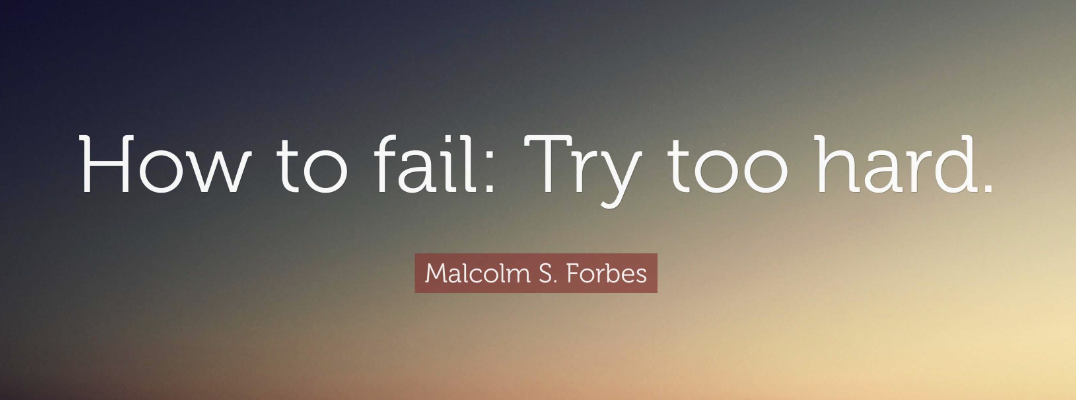Many people think that its important to work all the time to be successful, but sometimes if you are putting too much effort into something, you are actually driving it away.
Everyone is familiar of the dynamic in dating when someone tries too hard, it ends up pushing the other person away.
It can be better to be more relaxed, have other interests. Often some of my best ideas come when I’ve been trying to solve something, then go for a walk or have a shower. You might meet someone playing golf who might help you in your business for example.
You don’t need to have a battle with the world. You can achieve what you want, by making the right choices, by eliminating 80% of your work to focus on the 20% that is easiest.
To follow your energy and do what energizes you rather than drains you. That’s your own body telling you what to focus on.
When you loosen your grip, you are more likely to get it
When you want something too much you drive it away.
The Principle of Letting Go
The Balance of Inner and Outer Intent
- Inner Intent: Your personal drive and effort to achieve something.
- Outer Intent: The universe’s response to your state of being and intentions.
- Key Idea: Focusing solely on inner intent (trying too hard) creates resistance and obstacles. Balancing inner and outer intent involves letting go of the need to control every outcome, allowing the universe to co-create reality with you.
Excessive Importance
- Problem: Assigning excessive importance to desires or fears creates an energy imbalance, leading to resistance and preventing manifestation.
- Solution: Reduce the level of importance placed on outcomes. By adopting an attitude of indifference or balanced importance, you align yourself with the flow of life, reducing obstacles and facilitating the realization of your goals.
The Pendulums’ Effect
- Description: Pendulums in “Transurfing Reality” are energetic structures that feed on collective human emotions and thoughts.
- Consequence: Becoming too emotionally invested or trying too hard to achieve something can entangle you with negative pendulums, draining your energy and leading you away from your desired reality.
- Letting Go: Detaching from these pendulums by reducing emotional and mental investment in specific outcomes frees your energy to flow towards your true desires.
The Power of Not Trying Too Hard
Ease and Flow
- By not trying too hard and instead allowing things to happen naturally, you move with life’s flow, encountering less resistance and more synchronicities that guide you toward your goals.
The Role of Intention
- Distinguishing between ‘having to have’ and ‘choosing to have’ changes the energy of your intentions. Letting go means shifting from a place of need (which creates resistance) to a place of preference, where achieving or not achieving does not define your happiness or self-worth.
Illustrative Examples
- Career: Instead of obsessing over a promotion and working to the point of burnout (high inner intent), focusing on personal growth and contribution (balancing inner and outer intent) can naturally lead to career advancements.
- Relationships: Rather than trying to control the outcome of a relationship, letting go and focusing on being your authentic self attracts the right people into your life, those who resonate with your true essence.
- Happiness: Pursuing happiness directly can be elusive. By letting go of the chase and instead finding contentment in the present moment, happiness becomes a natural byproduct of living authentically.

Conclusion
The philosophy of “Transurfing Reality” offers a counterintuitive yet profoundly liberating approach to life: by letting go and not trying too hard, you align with the universe’s flow, reducing resistance and effortlessly attracting the experiences and outcomes that resonate with your true self. This approach does not mean abandoning goals or efforts but rather adjusting the way we engage with our desires and the world, promoting a harmonious balance between action and allowance, effort and surrender.
